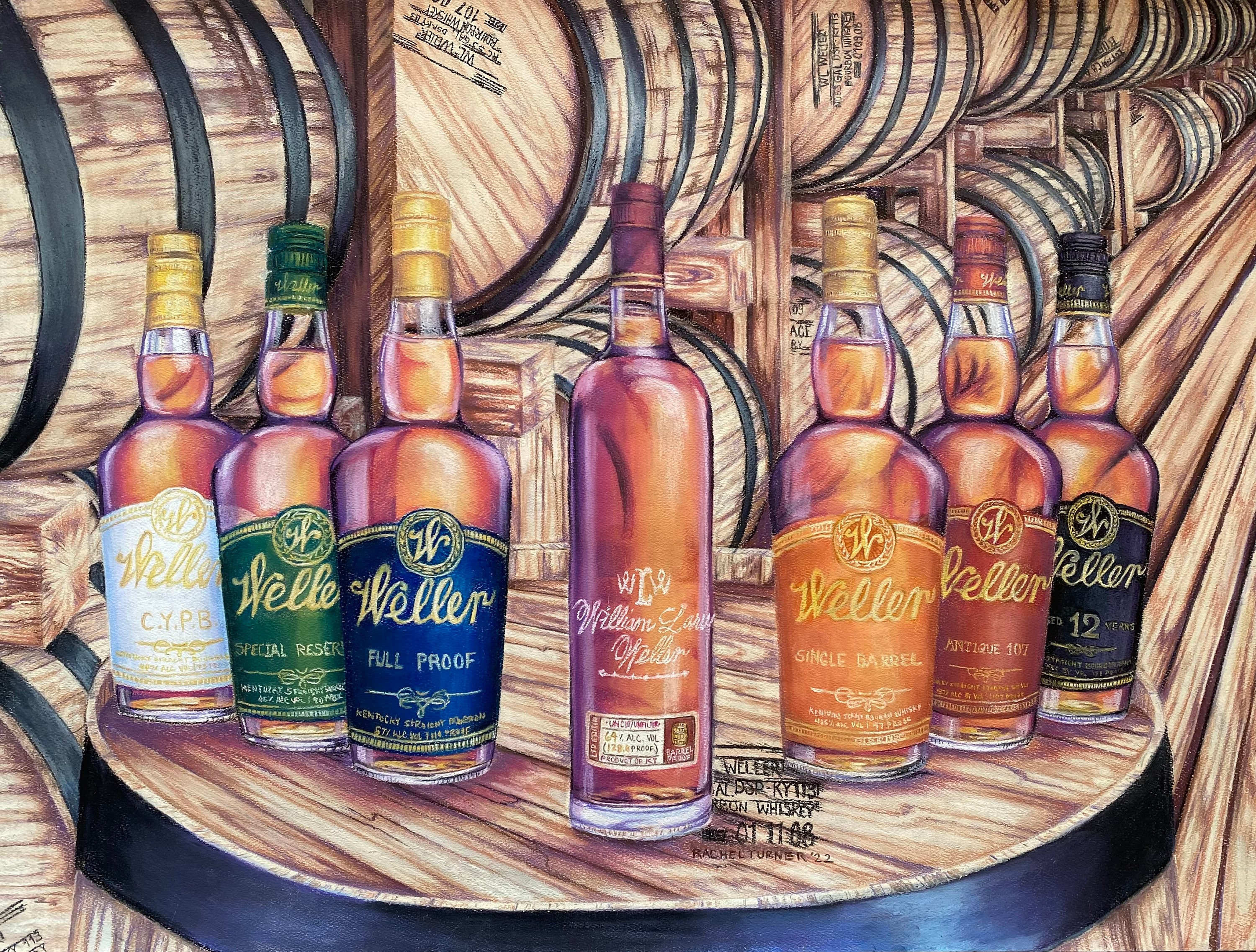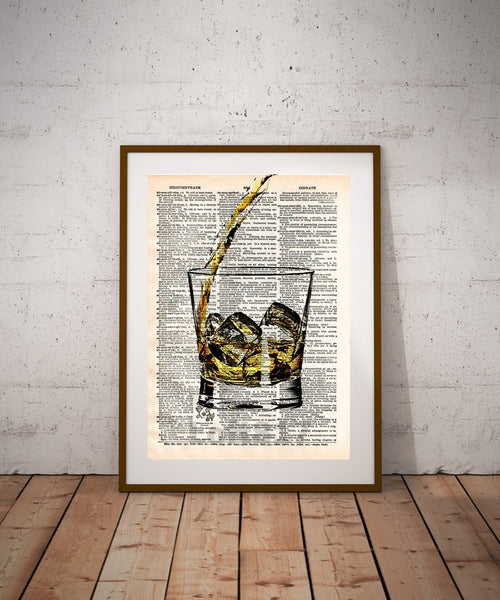Whiskey Art: Catching the Significance of Distillation in Every Brushstroke
Whiskey Art: Catching the Significance of Distillation in Every Brushstroke
Blog Article
The Significance of Whiskey Art in Celebrating Heritage and Workmanship in the Beverage Industry
The intricate connection between bourbon art and the event of heritage and craftsmanship within the drink sector can not be overemphasized. With thoughtfully developed labels and bottles, whiskey brand names envelop their historical origins and the artisanal abilities that define their production techniques. This artistic measurement not just enhances market charm however likewise works as a conduit for social narration, fostering a much deeper connection between the craft and the customer. As we explore the different facets of this subject, intriguing questions concerning the influence of modern-day trends on traditional methods occur, motivating further examination.
The Historic Roots of Whiskey
At the heart of bourbon's attraction exists an abundant tapestry of historic roots that map back to old people. The origins of scotch can be connected to the distillation techniques of the Sumerians and Babylonians around 2000 BCE, where early kinds of fermented grain beverages began to emerge. However, it was in the Middle Ages that the art of purification evolved considerably, specifically in Ireland and Scotland, resulting in the development of bourbon as we understand it today.
The term "whiskey" itself derives from the Gaelic word "uisce beatha," suggesting "water of life." This phrase underscores the social significance of whiskey in Celtic cultures, where it was often linked with routines, celebrations, and common bonding. By the 15th century, distillation became an acknowledged craft within reclusive communities, paving the way for the facility of lawful distilleries.
As profession paths broadened, bourbon's appeal grew, transcending regional borders and recording the interest of lovers worldwide. Realism Art. This historical trip mirrors not just the craftsmanship behind bourbon manufacturing but likewise its indispensable role in social and social contexts, noting it as a substantial beverage throughout history
Artistic Expression in Branding
Bourbon branding stands as a compelling crossway of artistry and commerce, where aesthetic identification plays a crucial function in forming consumer understanding. The visual appeals of scotch labels, product packaging, and marketing materials reflect not just the brand name's story but likewise its core values and heritage. With imaginative expression, distilleries communicate a narrative that resonates with customers, evoking feelings and stimulating links.
Using color, typography, and images in branding offers to set apart products in a saturated market. Traditional concepts may evoke a feeling of authenticity and workmanship, while modern styles can symbolize innovation and forward-thinking. This critical creative instructions improves brand acknowledgment and commitment, allowing customers to build an individual partnership with the whiskey they pick.
Additionally, creative expression in branding commonly functions as a celebration of local heritage. Distilleries often incorporate local signs or historical referrals right into their layouts, creating a feeling of area that invites consumers to participate in a wider cultural experience. Eventually, the artistry behind bourbon branding not just enhances visual charm however additionally improves the overall narrative of the brand, fostering a much deeper recognition for the workmanship and heritage ingrained in each container.
Workmanship in Bottle Layout
The artistry apparent in whiskey branding extends beyond aesthetic identity to incorporate the workmanship entailed in container style. Each container offers as a vessel not simply for the spirit within, but additionally for the tale it outlines its beginning, high quality, and custom. The style process requires meticulous focus to detail, as components over here such as material, closure, and shape contribute substantially to the general understanding of the whiskey.
Craftsmanship in container layout includes choosing high-quality glass that can boost the her explanation bourbon's shade and clearness, while additionally giving a tactile experience for the consumer. The shape of the bottle must be both useful and aesthetically enticing, typically reflecting the heritage of the brand name. Many distilleries choose one-of-a-kind forms or embossed logo designs that stimulate a feeling of authenticity and background.
Additionally, the tag layout and typography play an essential duty in communicating the brand name's story. Realism Art. A well-crafted bottle not just astounds the consumer's eye however also reinforces the brand's commitment to high quality and tradition. In this way, the workmanship of bottle design ends up being an essential aspect of the scotch experience, merging creativity with a profound respect for heritage
Cultural Significance of Whiskey Art
Celebrating custom and craftsmanship, the cultural significance of whiskey art transcends plain visual appeals, linking with the historical and social narratives of the regions where it originates. Each container functions as a canvas, showing the special tales, folklore, and traditions that have actually formed regional whiskey-making practices. The detailed styles frequently mirror the heritage of the distillers, integrating signs and concepts that resonate with the culture and values of their neighborhoods.

Additionally, whiskey art plays an essential role in public gatherings and events, offering as a concrete web link between people and their shared experiences. By valuing the artistry in scotch product packaging, consumers grow a much deeper understanding and respect for the craft, eventually improving their enjoyment of the drink itself.
Modern Trends in Bourbon Presentation
In recent times, the discussion of whiskey has progressed to mirror contemporary tastes and patterns while still recognizing traditional craftsmanship - Realism Art. Distilleries are increasingly concentrating on aesthetic components that boost the overall drinking experience, connecting the space in between heritage and modernity
Cutting-edge bottle designs have emerged, commonly including sustainable materials and artistic labels that tell compelling stories. Lots of brand names currently team up with local artists, infusing their products with unique visual expressions that resonate with consumers. Furthermore, limited-edition releases are typically packaged in collectible containers, including worth and charm for lovers.

Verdict
In conclusion, scotch art works as an essential conduit for revealing the heritage and craftsmanship integral in the beverage industry. With complex branding, cutting-edge container designs, and culturally significant creative aspects, scotch brand names properly recognize their traditions and connect with consumers. This my response artistic narrative not only raises the recognition of scotch however additionally enhances area identification and satisfaction amongst manufacturers. Inevitably, bourbon art plays a crucial duty in preserving and commemorating the abundant social tapestry of whiskey-making.


Workmanship in bottle design involves picking high-grade glass that can improve the scotch's color and quality, while likewise offering a tactile experience for the customer. In this method, the craftsmanship of container style becomes an essential element of the whiskey experience, combining creativity with a profound regard for heritage.
In final thought, whiskey art offers as an important avenue for revealing the heritage and craftsmanship integral in the beverage sector.
Report this page